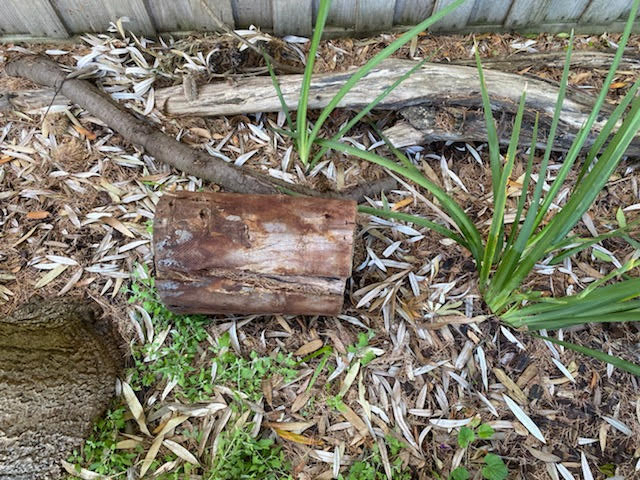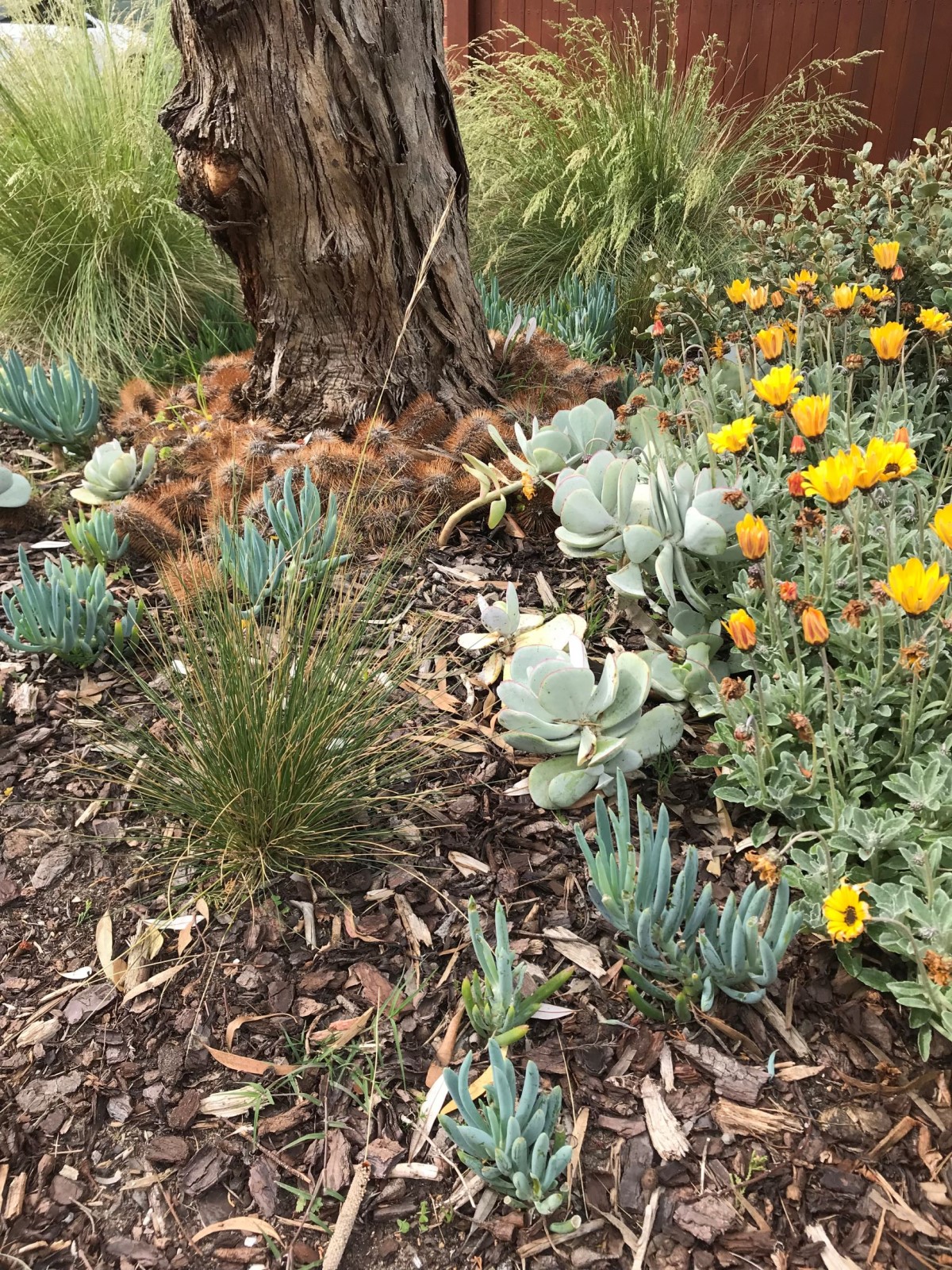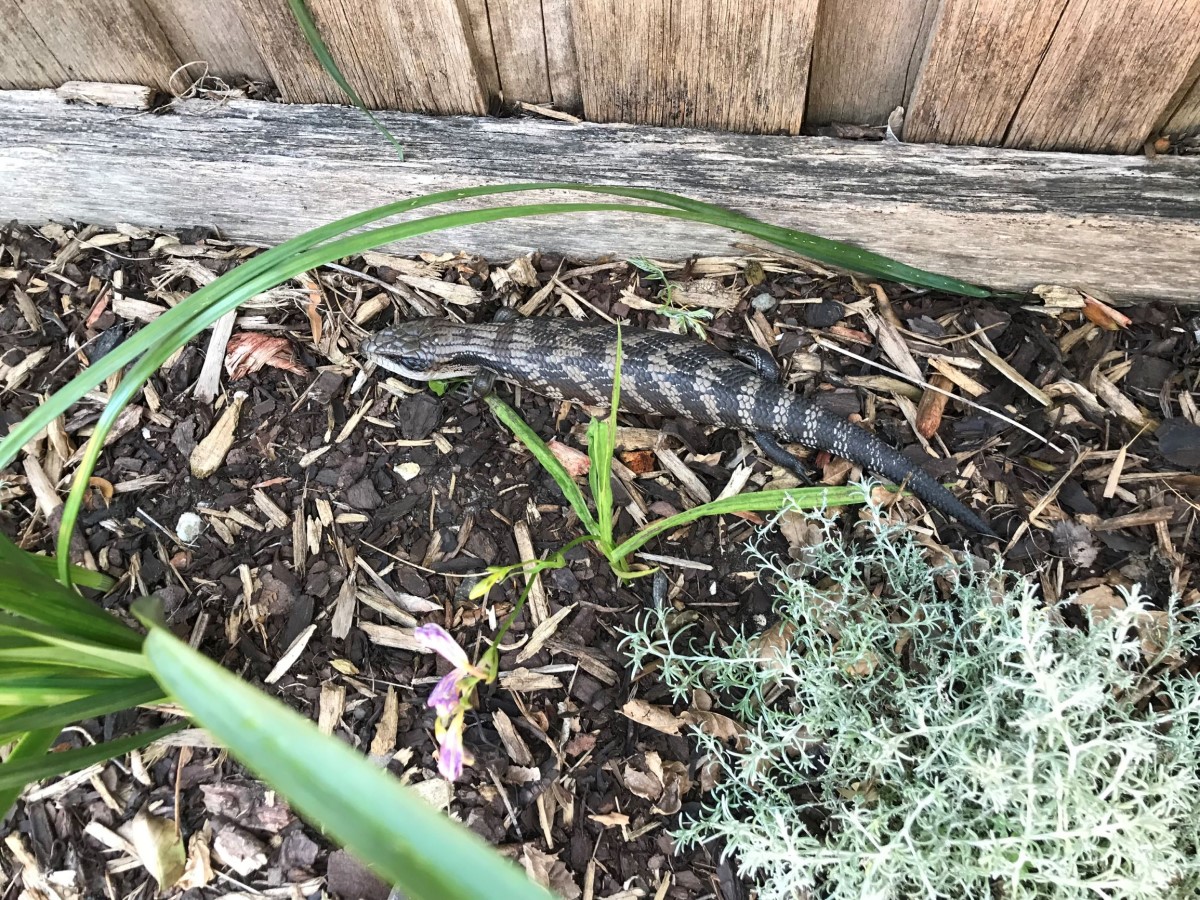
A patch of natural mulch for beetles and worms

Evie Leslie
When Evie undertook a garden restoration in her new Point Lonsdale home several years ago, advice on ‘starting from the ground up’ by our Garden Guides proved invaluable.
She started in the front yard, extending existing garden beds with a good layer of natural mulch, and repeated that in the back yard. The existing and new plantings thrived with this protective soil layer, and she has continued to create habitat using various natural materials.
Tree stumps from a neighbour’s felled gumtree were added beneath a weeping mulberry in another mulched area. Indigenous grasses and shrubs, including correas, Wallaby Grass and tussocks were planted as understorey. This area has become home to many skinks, even a local Blotched Blue-tongue Lizard, offering protection and food sources such as snails and beetles.
Evie has taken her mulching to the front verge. She has created an attractive new garden that was started with a skirt of natural mulch and includes fallen banksia flowers and cones from her neighbour’s banksia tree. She weeded and planted ground covers, grasses and colourful butterfly-attracting daisies. This ongoing project has not only provided enjoyment for Evie, it has also improved the health of the tree, the aesthetics of the streetscape, and has become a focal point attracting the interest and admiration of both her neighbours and passersby.
Evie is so pleased with her results.

Sandra Nowland-Foreman

Evie Leslie
‘What I enjoy most about my garden now is the wildlife it attracts and the feeling of having a natural local habitat surrounding our home. I love to see the birds and bees feeding, and butterflies flitting around, and I’m always happy to welcome visitors like skinks or larger lizards.’

